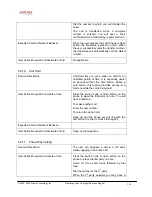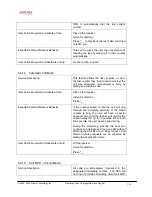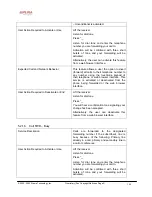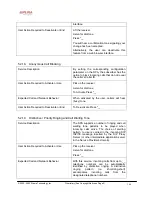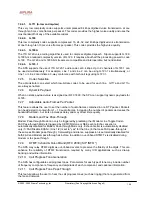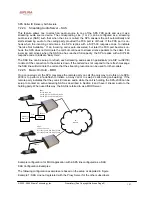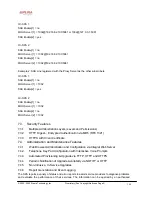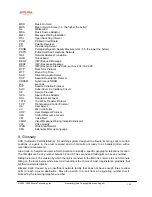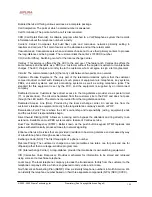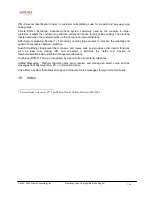
© 2003 - 2005 Sipura Technology, Inc
Proprietary (See Copyright Notice on Page 2)
127
7.1.7.
ICMP – Internet Control Message Protocol (RFC792)
7.1.8.
TCP – Transmission Control Protocol (RFC793)
7.1.9.
UDP – User Datagram Protocol (RFC768)
7.1.10. RTP – Real Time Protocol (RFC 1889) (RFC 1890)
7.1.11. RTCP – Real Time Control Protocol (RFC 1889)
7.2. Voice
Features
7.2.1.
SIPv2 – Session Initiation Protocol Version 2 (RFC 3261-3265)
7.2.1.1. SIP Proxy Redundancy – Static or Dynamic via DNS SRV
In typical commercial IP Telephony deployments, all calls are established through a SIP proxy server.
An average SIP proxy server may handle tens of thousands subscribers. It is important that a backup
server is available so that an active server can be temporarily switched out for maintenance. The SPA
supports the use of backup SIP proxy servers so that service disruption should be next to non-
existent.
Static Redundancy:
A relatively simple way to support proxy redundancy is to configure a static list of SIP proxy servers to
the SPA in its configuration profile where the list is arranged in some order of priority. The SPA will
attempt to contact the highest priority proxy server whenever possible. When the currently selected
proxy server is not responding, the SPA automatically retries the next proxy server in the list.
Dynamic Redundancy:
The dynamic nature of SIP message routing makes the use of a static list of proxy servers inadequate
in some scenarios. In deployments where user agents are served by different domains, for instance, it
would not be feasible to configure one static list of proxy servers per covered domain into an SPA.
One solution to this situation is through the use DNS SRV records. The SPA can be instructed to
contact a SIP proxy server in a domain named in SIP messages. The SPA shall consult the DNS
server to get a list of hosts in the given domain that provides SIP services. If an entry exists, the DNS
server will return a SRV record which contains a list of SIP proxy servers for the domain, with their
host names, priority, listening ports, etc. The SPA shall try to contact the list of hosts in the order of
their stated priority.
7.2.1.2. Re-registration with Primary SIP Proxy Server
If the SPA is currently using a lower priority proxy server, it should periodically probe the higher
priority proxy to see if it is back on line and attempt to switch back to the higher priority proxy
whenever possible. It is very important that switching proxy server should not affect calls that are
already in progress.
7.2.1.3. SIP Support in Network Address Translation Networks – NAT
7.2.2.
Codec Name Assignment
Negotiation of the optimal voice codec is sometimes dependent on the SPA device’s ability to “match”
a codec name with the far-end device/gateway codec name. The SPA allows the network
administrator to individually name the various codecs that are supported such that the correct codec
successfully negotiates with the far end the equipment.
7.2.3. Secure
Calls
A user (if enabled by service provider or administrator) has the option to make an outbound call
secure in the sense that the audio packets in both directions are encrypted.
7.2.4. Voice
Algorithms:







